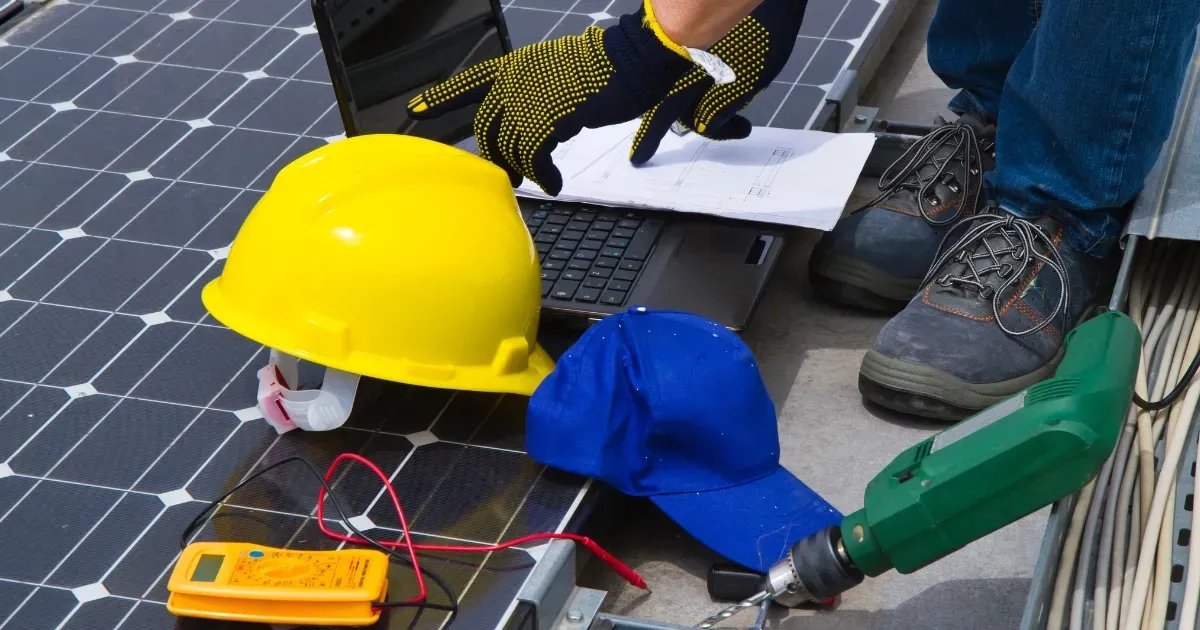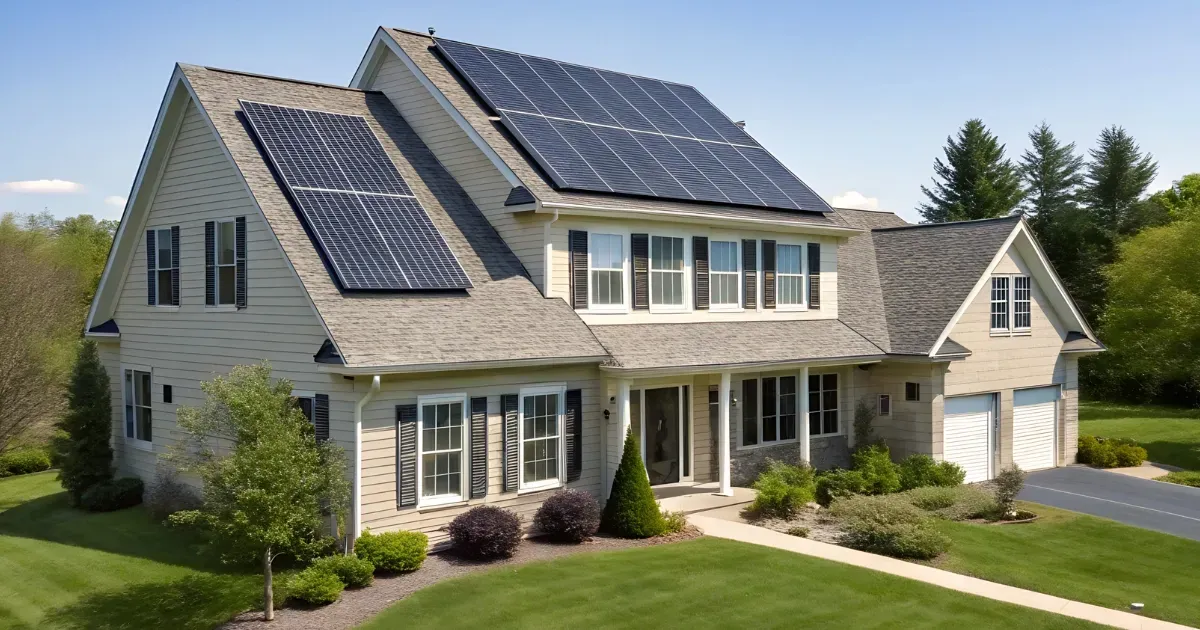Solar Power Roof Panels Guide: What to Know Before Install
Installing solar power roof panels is one of the smartest ways to cut your energy bills and enjoy long-term savings. These panels turn sunlight into clean solar energy, giving you more control over how your home is powered. Before you dive in, it helps to know how your roof condition, budget, and local weather can affect the installation. From choosing the right materials to understanding installation costs, every detail matters. This guide will walk you through what to check, which roof types work best, and how to protect your investment while keeping your solar system running efficiently for years.
What Are Solar Power Roof Panels?
Solar power roof panels are devices made of solar cells that absorb sunlight and turn it into renewable energy. They’re part of a complete solar energy system designed to supply electricity for residential solar homes. Using solar technology, these panels collect sunlight through materials like monocrystalline or polycrystalline silicon, offering different solar panel efficiency levels. Most systems connect to a home’s main solar array or energy storage setup for steady power. With improved bifacial construction, panels can even capture light from both sides, boosting overall energy production.
What Should You Check Before Installing Solar Power Roof Panels?

The success of your installation depends on how well your home can support a complete solar panel system. Taking time to review important details helps your setup run efficiently and deliver efficient solar energy throughout the year. Here are the important things to check when planning your solar panel installation.
Roof Size and Shape
Your roof shape affects how many solar panels can fit and the angle of sunlight they receive. A large, open area allows better placement of your solar array and simplifies the installation process. Irregular or steep roofs might need extra adjustments or mounting systems to optimize energy efficiency. Always have your roof evaluated to see if it can handle the weight and span capabilities of your planned setup.
Sunlight Exposure
Solar energy depends on sunlight. Roofs with minimal shading throughout the day achieve higher solar panel efficiency and better energy production. You can also use tracking systems like single-axis tracking systems or dual-axis tracking systems to follow the sun’s movement. These upgrades increase your total wattage output and help you make the most of natural solar reflectivity.
Roof Age and Materials
Older roofing materials may not support new solar installations without proper roof upgrades. It’s best to inspect and repair your roof before setting up a solar panel system to prevent damage later. Materials like asphalt, metal roofs, and clay tiles work well because of their durability and compatibility with solar racking. Updating your roof now saves time and future installation costs.
Local Weather Conditions
Local weather patterns play a major role in system performance and maintenance needs. Homes in windy or snowy areas might require stronger steel structures and water-shed designs for stability. Frequent rain can be benefited from rain gutters that protect wiring and panels. Always match your system’s setup with your region’s weather to keep your solar power consistent and your roof safe.
Which Roof Types Work Best for Solar Power Panels?

Different roof types have unique advantages for solar installations. The structure, slope, and material determine how your mounting systems attach and how much solar energy your panels capture. Knowing which type works best can help homeowners choose the safest, most cost-effective way to build a long-lasting solar energy system.
Asphalt Shingle Roofs
These are the most popular choices for residential solar systems. They provide a strong surface for secure mounting systems and handle heat from solar technology well. Their smooth texture allows easy sealing, reducing the risk of leaks. Because of their affordability, they’re ideal for homeowners looking for sustainable solar power without high installation costs.
Green or Living Roofs
Green roofs combine plants with sustainable design, offering natural insulation and stormwater control. Installing building-integrated solar panels here helps promote sustainable living and better energy efficiency. It’s essential to use proper waterproof layers under the solar tiles or solar roof shingles to prevent root intrusion. This setup supports both eco-friendly construction and consistent energy production.
Standing Seam Roofs
These roofs are excellent for solar racking because panels can be clamped directly onto seams, avoiding drilling holes. The design improves solar reflectivity and keeps panels securely fastened in high winds. Metal seams also provide a long lifespan, matching the durability of solar panels themselves. They work well with both hybrid solar systems and traditional solar arrays.
Tile and Clay Roofs
Clay tiles are beautiful and durable, but require special brackets to fit solar shingles or solar tiles securely. Their curved shape can limit available space for solar installations, but the aesthetic appeal is unmatched. Installers often replace a few tiles with solar roof shingles for smoother mounting. It’s a good choice for homes that value both style and renewable energy use.
Wood Shake Roofs
Wood shake adds rustic charm but may not be ideal for solar installations due to its flammability and uneven surface. If this is your roof type, consult experts for fire-rated mounting systems and extra protective layers. While not the easiest to modify, proper installation can still yield efficient solar power generation. Regular inspection helps keep the solar array secure and safe.
Low-Slope Roofs
These roofs offer great flexibility for rooftop solar setups with angled mounts to catch sunlight. They allow more control over panel orientation for higher solar panel efficiency. Using elevated mounting systems also improves ventilation and cooling, extending the lifespan of your solar cells. This setup works well for both residential solar and small commercial buildings.
Composite Roofs
Composite roofs provide strong structural support and easy panel attachment, making them a popular choice for homeowners. They resist weather damage and adapt well to solar racking designs. Their smooth surface reduces risk during the installation process, keeping installation costs lower. It’s an affordable way to enjoy reliable energy independence.
Slate Roofs
Slate is elegant but fragile, requiring expert installers with experience in solar technology. Specialized clamps and mounting systems can secure panels without cracking tiles. While the installation process may cost more, energy production remains high because of slate’s reflective surface. It’s a luxury option that pairs style with lasting renewable energy value.
Metal Roofs
Metal roofs handle solar installations very well, offering both durability and excellent solar reflectivity. The surface allows direct clamping of panels, avoiding penetrations that could cause leaks. They’re ideal for ground-mounted solar panel systems, alternatives, or standard ground mounts. Their long lifespan matches the duration of most solar energy warranties, making them a smart investment.
Flat Roofs
Flat roofs are versatile and perfect for tracking systems that adjust to sunlight direction. They can host both standard ground mounts and pole-mounted solar systems, depending on soil type and structure. This flexibility improves energy efficiency and makes room for future battery storage upgrades. It’s a practical setup for maximizing available space and reducing utility costs.
How to Protect Your Roof During Solar Installation
Protecting your roof starts with choosing qualified solar installers who understand both roofing materials and solar technology. A proper installation process uses secure mounting systems that prevent leaks or weak points. Installers should inspect rain gutters, flashing, and sealants to avoid moisture buildup. After installation, schedule periodic checks to maintain roof integrity and system alignment. Regular maintenance supports long-term energy production and extends your solar panel system’s life.
Frequently Asked Questions
How long do solar power roof panels last?
Most solar panels last 25 to 30 years while maintaining strong solar panel efficiency. Over time, solar technology continues to improve, extending panel durability. Routine maintenance helps preserve consistent energy production.
Will installing solar panels damage my roof?
When installed correctly, solar installations will not harm your roof. Expert installers use protective mounting systems and sealants to keep water out. Quality work actually strengthens your roofing materials.
Can solar panels work on older roofs?
Yes. But older roofs might need replacement before the installation process. A new surface protects both the solar array and your home’s structure. Upgrading your roof first saves future solar panel repair costs.
How much sunlight does my roof need for solar panels?
Your roof should get at least four to five hours of full sunlight daily for optimal energy production. Roofs with shading issues can benefit from tracking systems or high-efficiency solar cells. More exposure equals better performance.
Do local weather conditions affect solar panel performance?
Yes. Extreme local weather patterns like snow, wind, or heat can influence how well your solar energy system performs. Proper mounting systems and durable roofing materials help offset these effects. Regular maintenance guarantees your panels stay in top condition.
Wrapping Up
Investing in solar power roof panels brings lasting financial and environmental benefits. With modern solar technology, homeowners can enjoy lower utility costs, reliable energy storage, and the freedom of energy independence. Pairing the right roofing materials with a personalized solar plan leads to stronger results and longer system life.
Solar installations have become one of the most effective ways to achieve long-term sustainable living. By investing in solar panels, you reduce your carbon footprint, gain energy security, and boost your home’s value. Choosing high-quality materials and expert installers guarantees efficient energy production and dependable performance for years to come.
At
Local Map Construction, we can help you explore the best solar energy solutions for your home and start your journey toward a brighter, more sustainable future. Call us at 970-218-1620 for expert support with your solar installations.

